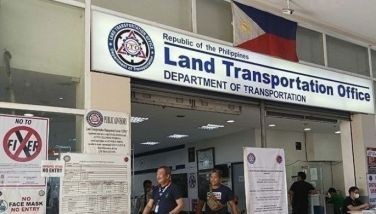Manyaman, masarap, delicious
The popular Ambeth Ocampo is known as a public historian and the editorial page columnist of the longest running column on history. An author of numerous bestselling titles from Rizal Without the Overcoat to Cabinet of Curiosities: History of Philippine Artifacts, his latest is a slim book that is of special interest to me with Kapampangan roots as my mother, herself an excellent cook, Josefina Sicangco Cruz hailed from Angeles. It was nostalgic and mouthwatering reading, Ocampo’s most recent title, Manyaman: Food in Pampango Culture, Anvil Publishing, 2024. (“Manyaman” means “masarap,” delicious.)
While it seemed logical and a companion book to “The Ultimate Filipino Adobo: Stories plus Recipes from the Heart” by Claude Tayag which I wrote about in my last column, Ocampo’s approach is very different. His is neither a cookbook nor a recipe book. In keeping with his scholarly orientation and interest, his is one of interesting narratives on Kapampangan food as part of culture. Food for special occasions, Daily Food,Commercial Food are discussed.
Growing from his BA thesis, this book is of personal significance to Ocampo because it is a record of his beginnings as a historian and researcher in Philippine culture. Perhaps, of greater significance to him because it “documents how a school requirement led to the rediscovery of my father’s Kapampangan culture that I belatedly but wholeheartedly adopted as my own.”
Daily Food or what food scholar Mariano Henson terms the “Poor Man’s Menu” covers everyday food of the Pampango, no matter his social or income level. The fare is the same, varying only in the quality and quantity of food, said to be dependent on economic rather than culinary reasons. An example given is the porridge which would taste the same, except that one would have more chicken or sahog (other ingredients), while the humbler version would have more rice.
The section on the Pampango cook – legendary and essential for the lavish feasts of the affluent families long before commercial catering entered the scene – recreates the milieu of those good old days before agrarian unrest and the Huks’ critical attitude towards the ways of the feudal system changed all that.
The cook would be contacted months in advance and then the cook would submit his grocery list, deviations from which would make the cook sulk or feign an excuse to abandon the job. Neither would he tolerate any cost-cutting.
The cooks possessed similar traits: “dictators of the kitchen, capricious, temperamental and autocratic but very good when it came to producing a meal.” Thus, their quirks could be tolerated.
How they guarded their culinary secrets. They had no recipes and cooked “tantsa” or “oido,”meaning they would throw in ingredients as the moment and perhaps the mood dictated. So even when cooking the same dish, the taste could not be duplicated. They held their culinary secrets close to their hearts, not training their assistants who were said to be kept busy so they would not witness every step. Neither did they pass these secrets on to their own kin, which unfortunately were lost with their demise.
The Pampango celebrates with feasting, with the host ensuring that every guest is well-fed, often overfed. Hospitality and the lavishness of the spread, especially during the three-day fiestas of yesteryears, are almost legendary. And predictably, the worst nightmare for the host is to run out of food – “makorilyu,” which comes from the Spanish “corillo,” a group of gossipers. Certainly, the host with such a fate becomes the talk of the town. Having an overabundance of food is the rule to follow, then.
On to the curious question: What makes Pampango food “good”? The most common of many hypotheses is that it is good because of the strong Spanish influence. It is claimed that after nearly 400 years of Spanish colonization, the Pampangos cooked well enough to serve the colonial masters food they wanted, which was similar to what they were accustomed to in their home country. These cooks had to be innovative as they turned to available local materials to create Spanish-like cuisine, eventually the Filipino-Pampango cuisine.
The province’s major products are sugar and rice. Pampangos had to create cuisine which would “offset the blandness of rice.” Many viands had to contrast with the rice’s blandness, along with the many sauces and dips.
Gilda Cordero-Fernando, in her own research on Philippine culinary history, said that since Pampanga was plentiful with freshwater fish, which is not as tasty as saltwater fish, its cooks had to be creative in many ways with the fish available to them.
Bulacan cuisine is said to rival Pampanga’s. San Miguel de Mayumo of Bulacan is well known for its sweets. But when old folks were interviewed about their cooking, their answer would be to credit Pampango cooking. Hacienderos in Bulacan would hire Pampango cooks for their fiestas. Revealing is that the word “mayumo” is Pampango for sweet or sugar.
The “good life” and the lavish celebrations that the affluent Kapampangans hosted, which impressed the colonizers, were characterized by the abundance of food and such entertaining ingrained into the lives of these landowners.
Much still needs to be further studied about Pampango cuisine. Special credit for pioneering initiatives as Tayag’s and Ocampo’s is Robby Tantingco of the Holy Angel University Center for Kapampangan Studies, who spearheaded the first international conference on Kapampangan Cuisine in March 2024.
- Latest
























